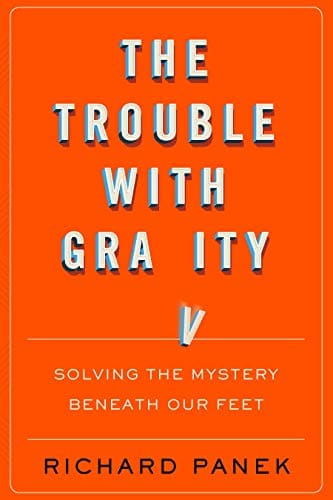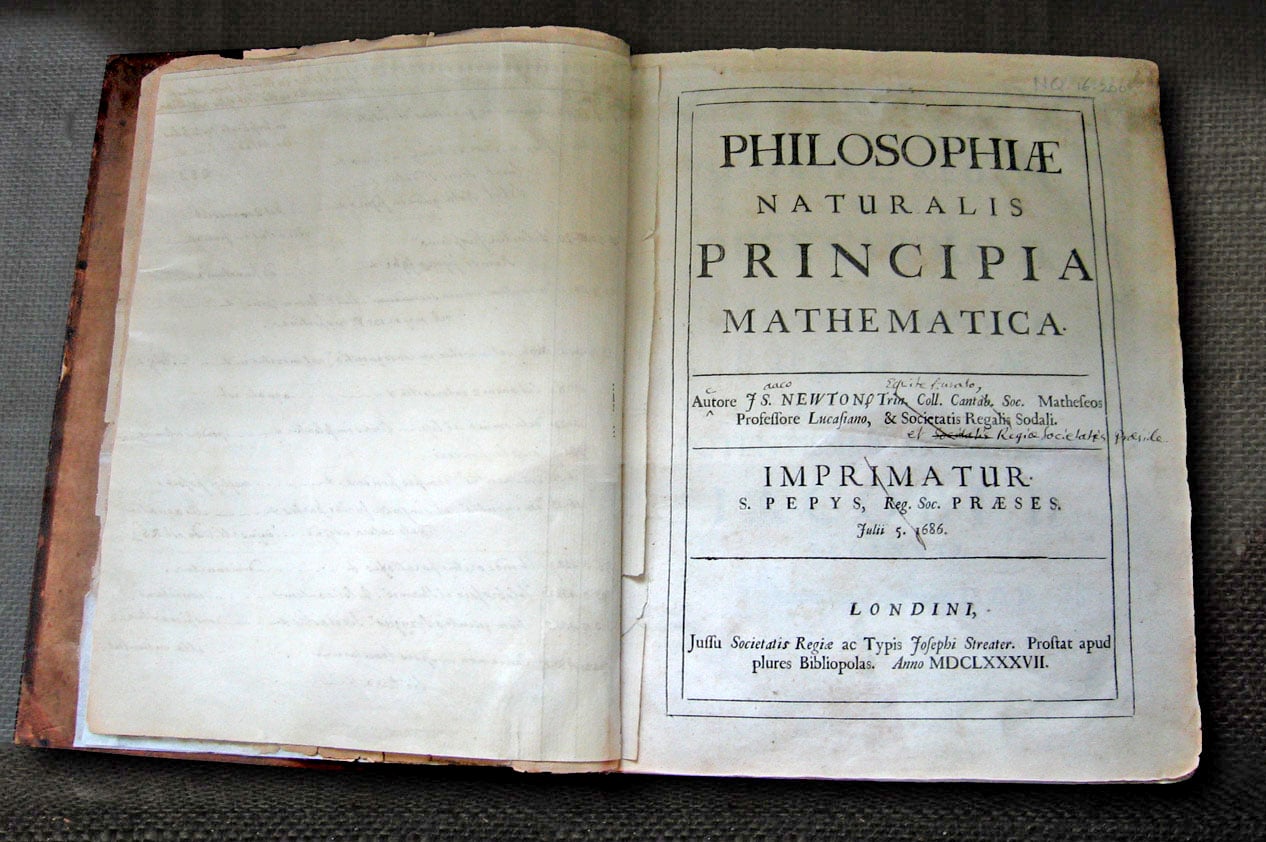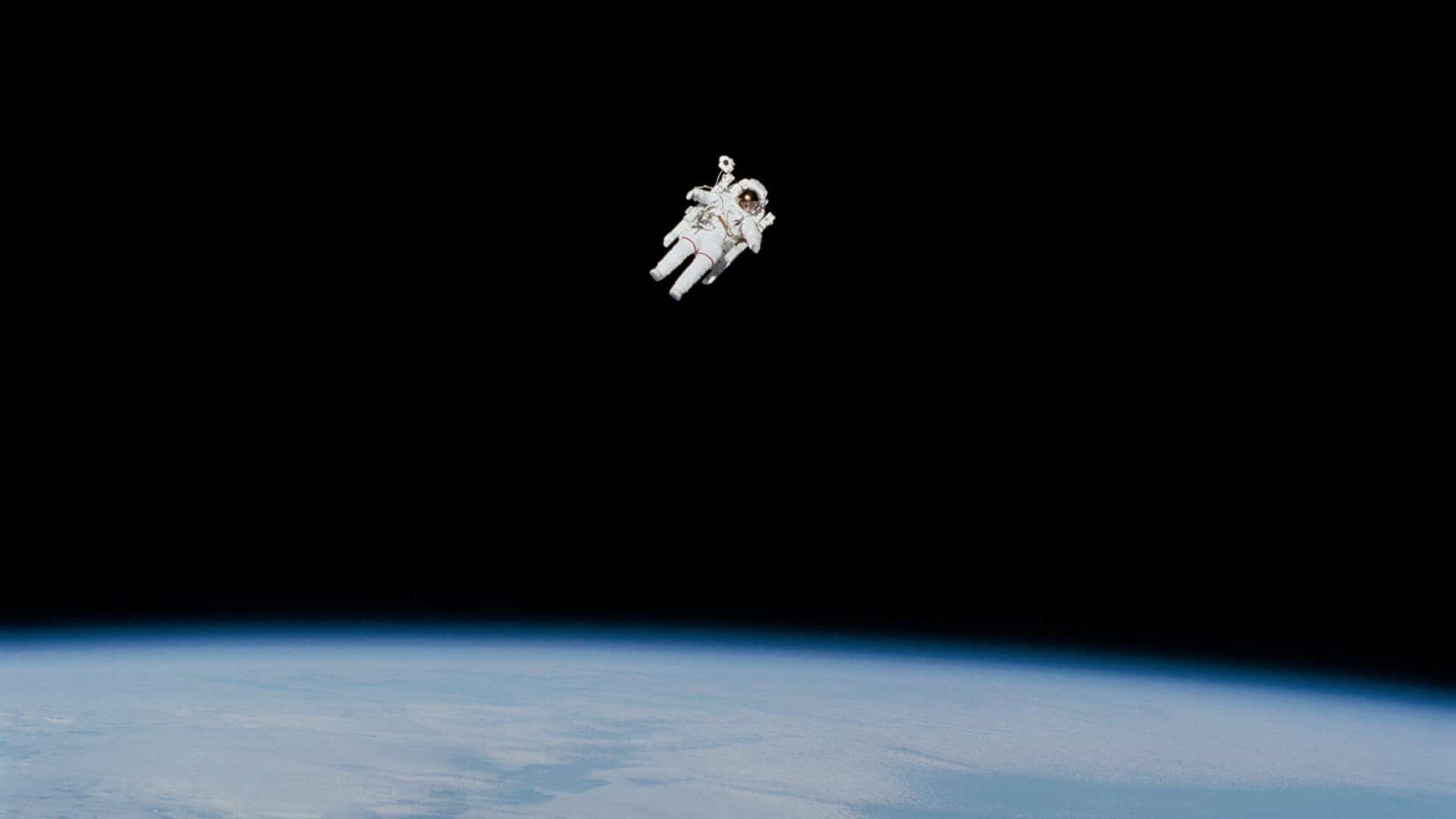Few things are as familiar and yet as elusive as gravity. You can’t see or hear it, though you constantly witness its effects. It’s everywhere, and it’s inescapable.
In December 1968, the Apollo 8 astronauts left the Earth’s gravitation grip for the first time — but they certainly didn’t escape gravity itself. They merely traded our planet’s gravitational pull for that of the moon: As they approached the moon, they eventually entered the zone in which the moon’s gravity dominates that of Earth.

BOOK REVIEW — “The Trouble With Gravity” by Richard Panek (Houghton Mifflin Harcourt, 256 pages).
The Earth’s pull is diminished, but it never reaches zero. Even the so-called “zero gravity” experienced by the crew of the International Space Station is a misnomer: There’s plenty of gravity where the ISS is; that’s what holds it in its orbit. (The crew doesn’t feel gravity’s effects because they, along with the station and everything in it, are “falling” at the same rate as one another, as they orbit the Earth.)
Ubiquitous as it may be, gravity has proven to be frustratingly difficult to comprehend — a paradox that lies at the heart of science writer Richard Panek’s new book, “The Trouble with Gravity: Solving the Mystery Beneath Our Feet.”
It wasn’t until the work of Isaac Newton, in the second half of the 17th century, that we really started to make sense of it. Panek points out that Newton kept two notebooks. In one, he confessed his various sins, including making pies on the Sabbath and having “uncleane thoughts words and actions and dreamese.” In the other one, he addressed “certain philosophical questions.”
Roughly speaking, he had a “God notebook” and an “earthly matters” notebook. These days science is a secular pursuit, but for Newton, understanding the workings of the universe couldn’t be separated from an attempt to understand — to borrow a phrase that Stephen Hawking would use some 300 years later — “the mind of God.” And so, for Panek, the two notebooks serve as a useful metaphor for Newton’s conflicting urges.
In explaining gravity — and along with it, the structure of the solar system — Newton was torn between a purely physical account and one which required, or at least reflected, the divine. As he would write in his masterwork, the “Principia,” the “most elegant system of the sun, planets, and comets could not have arisen without the design and dominion of an intelligent and powerful being.”
Newton was struggling to understand gravity, space, and time. Space, like God, seemed to permeate the universe — he described it as God’s “sensorium” — and gravity somehow held everything together.
Newton showed that gravity attracted every object to every other object, throughout the universe. He figured out the equation governing this attraction, which we now call Newton’s law of universal gravitation. But how, exactly, did gravity work? How could it reach across empty space? Newton, stymied, wrote: “I have not as yet been able to deduce from phenomena the reason for these properties of gravity, and I do not feign hypotheses.”
Newton’s “Principia” might be familiar territory for the sort of reader Panek is likely to reach; less well known is a peculiar book called “Somnium” (Latin for “The Dream”), written by German mathematician and astronomer Johannes Kepler, who pre-dated Newton by more than half a century. “Somnium,” written in 1608 (but only published later, by Kepler’s son), vividly imagines the people and creatures that might live on the Moon, as well as what the view of Earth would look like from so far away; it is, arguably, the first work of science fiction.

Remarkably, Kepler gets the relevant physics more or less right, even though he’s clearly struggling to make sense of the force we now call gravity. (And if you think it’s hard to understand now, imagine how hard it was before Newton came along.) “Somnium” requires some context, and Panek provides it: Kepler, he explains, was writing at a time when reports of new lands were reaching European ears, and his audience was primed for stories about strange new worlds. Kepler’s trick was to place those new worlds above our heads. In this way, he was able to slip an astronomy lesson into a tale that reads like a fantasy novel. Clearly we’re in the history-of-science trenches here; to Panek’s credit, the story is entertaining enough that we don’t realize we’re in the trenches.
Readers who habitually plow through popular science books (especially those that focus on physics and astronomy) will guess where things are heading: We know we’ll eventually meet Einstein and curved space-time, and we know we’ll hear about black holes and gravitational waves. But Panek’s amicable, almost breezy style makes the journey, familiar as parts of it may be, fun.
Consider black holes. You know, or at least you’ve heard, that they have intense gravitational fields; their gravitational pull is so strong that not even light can escape. But what would you actually see if you fell into one? As it turns out, you’d see time “out there” — out beyond the edge of the black hole — speeding up. In fact, as you plunged to your doom, you’d witness “the entire future of the universe,” Panek writes. He justifiably dwells for several paragraphs on just how mind-boggling this is. By confessing his own amazement, he invites the reader to share in the adventure.
Black holes boggle the imagination — and so too does the so-called multiverse. The very idea of multiple universes has sparked controversy for decades, and today’s physicists are sharply divided over whether to take the idea seriously. But in Panek’s hands, the idea seems almost plausible: “Aristotle’s spheres defined our farthest view; then Galileo’s congeries of stars within our galaxy; then Hubble’s congeries of galaxies; then superclusters of galaxies, all hanging by a dark-matter thread; then a web of threads billowing from dark energy’s breath,” he writes. “Why not other universes?”
There are occasional heady ideas here, and the reader could easily get bogged down without a skilled tour guide. Panek largely succeeds, not by shouting facts with a megaphone, but by inviting us to follow along as he explores the alleyways of the often-convoluted history of the physical sciences — and he does so with humility and humor.
Often, I wanted to play along. Panek lists the movies in which gravity plays a key role (think of characters clinging for dear life to the edges of cliffs) and mentions “North by Northwest,” “Saboteur,” and “Vertigo”; I wanted to add “Blade Runner,” “Die Hard,” “Cliffhanger,” and (of course) “Gravity.” (I caught just one mistake: Panek tells of Einstein lecturing on general relativity to the Prussian Academy in the fall of 1915, but places the Academy in Vienna rather than Berlin.)
“The Trouble with Gravity,” not surprisingly, is about more than gravity; it’s about our continuing struggle to understand how the universe works. But the two are inexorably intertwined. Gravity governs the motion of everything from golf balls to galaxies. It has guided the first 14 billion years of cosmic evolution, and will guide its future as well. This book is a good place to get to know it a little better.
Dan Falk (@danfalk) is a science journalist based in Toronto. His books include “The Science of Shakespeare” and “In Search of Time.”











Comments are automatically closed one year after article publication. Archived comments are below.
Yes, it is mystery. GR is a manipulation theory of gravity. It uncovers science of light and not gravity. One thing scientists deliberately ingnoring is that it increases as mass concentrate (density), molecules comes closer on the other hand dark matter mother concentrate nor interect with eachother. This evidence is sufficient for rejecting GR. There are many more points where it fails
It is erroneous to say we “constantly witness the effects of gravity”. This phrase has an apriori sense to it. What we actually do is observe and note events and we totally arbitrarily attribute the cause of the event to an unforeseen source that we assign the label of gravity to it, for want of a better qualifier. Imagine a ball falling down. Newton simply said that the fall of the ball was caused by an unforeseen force, and he called it gravity. The fall of the ball is not evidence that gravity exists. The only truth in this action is that the ball fell (relative to us). To say that gravity caused it to fall is a huge step from that action. A much better alternative is to offer the “law of conservation of energy” principle as the main reason why the ball fell: the ball transitioned from an area of high concentration of mechanical energy to an area of low concentration of mechanical energy”. This is the Zeroth Law of Thermodynamics.
It is also erroneous to say “(The ISS crew – – – – – – – – – -, along with the station and everything in it, are “falling” at the same rate as one another, as they orbit the Earth)”. In actuality, the crew is ACCELERATING at the same rate of acceleration as the ISS. They are falling indeed BUT they are orbiting the Earth at a constant SPEED, and ACCELERATING nonetheless! How can an object be moving at a constant speed and yet it’s observed to be accelerating you ask? That’s because by definition, if an object has an acceleration, its VELOCITY is changing but NOT necessarily its speed. Speed and Velocity describe two different forms of motion.
For those who wish to know numbers, the ISS is accelerating at 8.8 meters/second every second (28.9 feet/second every second) and orbiting the Earth at the constant speed of 7.69 kilometers per second (27,700 kilometers per hour, or 17,000 miles per hour).
An even more interesting consequence of free fall is the fact that the crew would NOT BE in ZERO-G (that is to say WEIGHTLESS), but EXPERIENCE weightlessness because they are all accelerating at the same rate and scales do not function during free fall.
I don’t think that gravity is complicated it is a static force .The large size pulls objects into its force field like dust is attacked to every object in a house.The large object pulls the dust to it because of its size has a static field that palls the tiny particles to it .
OK folks this may be deemed as hypothesis: Everything has electrons, it’s the EMF attracting objects to large masses. The large mass has the greater charge. A spaceship would undoubtedly to me attract space dust and grains of space rock ie debris. Here’s one to ponder, as spirits as we accumulate enough space dust ie star dust let’s call it. It forms a body around our EMF aura as spirits. On the bright side you can fortunately shake that star dust loose at will, well hopefully. One for the quantum folks, Earth is a living entity just like each one of us are. I’ll use my own advice I’m watching my diet.
as I reach the age of 82, I thought I’d left my inquiring mind behind – until I read the intro to “the trouble with gravity” As a Buddhist, I think I just experienced rebirth. I look forward to reading further.